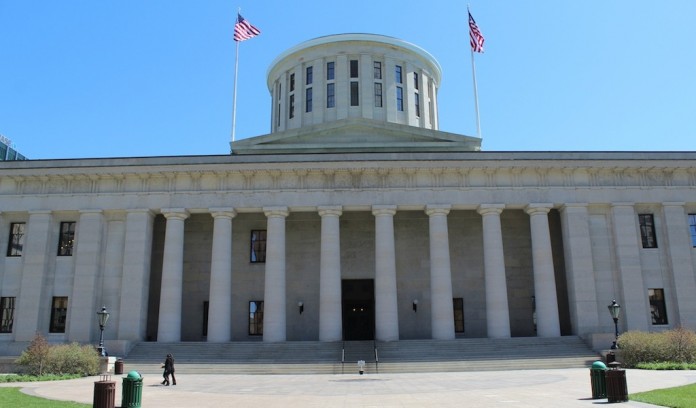Ohio Gov. Mike DeWine unveiled a new proposal for the next executive budget for the state Feb. 1, including a $1 billion Investing in Ohio Initiative aimed at helping Ohio’s economy recover from the impact of the pandemic, and investments in H2Ohio, broadband, nutrition and food access and farmland preservation.
The proposed budget goes to the general assembly next. The House finance committee held its first hearing on the proposed budget Feb. 4.
Broadband
DeWine wants to allocate $250 million for broadband expansion. That number includes $200 million in direct grants to internet service providers to expand their networks.
The other $50 million would help cover infrastructure costs, use state assets and match funds to get federal dollars for companies to offer low cost internet in both urban and rural areas.
“Broadband access is incredibly important,” Lt. Gov. Jon Husted said during the press conference announcing the proposal. Many Ohioans, he added, struggle with access, which makes it difficult or impossible to get access to remote work, healthcare, education and other things. “We’re going to really invest big in changing all of that, and we don’t have time to wait around — the time is now.”
Organizations including the Chamber of Commerce, Ohio Municipal League, AT&T Ohio and Ohio Business Roundtable applauded the proposed investment in broadband.
Agriculture
The budget recommends an approximate 46% increase in funding for the Ohio Department of Agriculture in fiscal year 2022. Recommended funding for the department of agriculture includes $1 million in coronavirus relief for local fairs during fiscal year 2022.
The budget also seeks to invest $7 million in the Farmland Preservation Program. This adds to a recent $12 million capital appropriation to the program. In late 2020, the program’s advisory board announced it had overspent and will not accept new applications for the Local Agricultural Easement Purchase Program in 2021.
This funding for the next biennium would allow landowners and farmers to preserve at least 3,500 additional acres, a budget factsheet said.
Nutrition
The budget would include $1.6 million in funding for child nutrition programs, including things like the National School Lunch program.
It also offers $56 million for food banks, with $49 million of that to help the Ohio Association of Foodbanks buy and distribute food. The other $7 million would help food banks meet storage and transportation needs during fiscal year 2022. Foodbanks have faced more demand during the pandemic as people struggle with the economic impacts of the virus.
Water quality
The proposed budget includes nearly $250 million for the H2Ohio water quality initiative, with $100 million going to the department of agriculture’s program to help farmers implement best management practices for reducing nutrient runoff.
So far, farmers have enrolled more than 1 million acres of cropland in the program in the 14 counties it was open to in 2020.
“You’re going to see H2Ohio fully funded,” DeWine said, adding that all three departments involved in the initiative, the department of agriculture, department of natural resources and environmental protection agency, will continue to get funding for their programs. “We know that [addressing Lake Erie’s water quality challenges] is a decade long task. We have to continue to do that.”
The Ohio Soybean Association applauded the investment in a Feb. 1 press release, saying it looks forward to continuing to build on what the H2Ohio program has already accomplished.
The initiative was originally funded with $172 million for fiscal years 2020 and 2021, through the biennial budget signed in 2019. This was cut back from DeWine’s original proposal earlier that year for about $900 million to be used over 10 years.
Despite statewide budget cuts and constraints, the initiative was able to use all of the $172 million originally allocated to it for the first two years.
In a September 2020 update, leaders on the initiative said the department of agriculture would need an additional $45 million to fund the program through 2023. In a December update, they also indicated that the department was hoping to open the program to an additional 10 counties in the Lake Erie area.
Response
In the press conference announcing the budget, DeWine and Husted emphasized the recovery funding includes one time investments, rather than ongoing funding, and that the budget does not include any tax increases or dip into the rainy day fund.
House and Senate Democratic leaders responded to the proposed budget in Feb. 1 statements, noting that the proposal shared some Democratic priorities, including broadband access and investing in water quality.
House Minority Leader Emilia Strong Sykes (D-Akron) added that House Democratic leaders would be willing to draw from Ohio’s rainy day fund to shore up essential services, during the pandemic, and are interested in looking at how the budget makes sense long term, without just one time funding.










